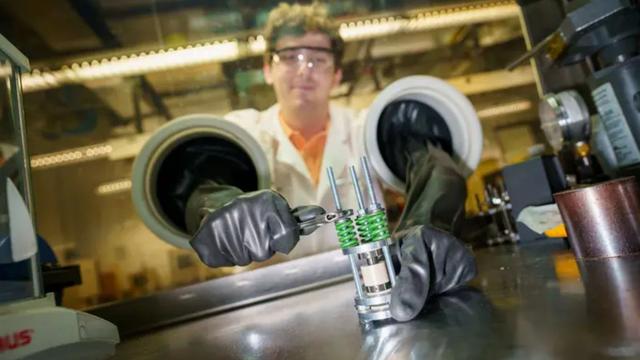Researchers have developed the world’s first anode-free sodium solid-state battery, bringing the prospect of inexpensive, fast-charging, and high-capacity batteries for electric vehicles and grid storage closer than ever before. This groundbreaking innovation is the first to combine sodium, solid-state technology, and anode-free architecture in a single battery.
The new sodium battery design demonstrates stable cycling for several hundred cycles. By eliminating the anode and utilizing inexpensive and abundant sodium instead of lithium, this new type of battery will be more affordable and environmentally friendly to produce.
The innovative solid-state design of the battery ensures it is both safe and powerful. While lithium is commonly used in batteries, it is not as abundant as sodium. Lithium comprises about 20 parts per million of the Earth’s crust, whereas sodium accounts for 20,000 parts per million. This scarcity, combined with the rising demand for lithium-ion batteries in laptops, phones, and electric vehicles, has driven up prices, making these essential batteries less accessible.
Lithium extraction is environmentally harmful, involving industrial acids to break down mining ore or the more prevalent brine extraction, which requires pumping massive amounts of water to the surface to dry.
Sodium, commonly found in ocean water and soda ash mining, offers a more environmentally friendly battery material, and the LESC research has demonstrated its potential as a powerful energy source.
To achieve a sodium battery with energy density comparable to that of lithium batteries, the Researcher Team had to invent a new sodium battery architecture. Traditional batteries have an anode that stores ions while the battery is charging. During use, the ions flow from the anode through an electrolyte to a current collector (cathode), powering devices and vehicles along the way.
Anode-free batteries eliminate the anode by storing ions directly on an electrochemical deposition of alkali metal on the current collector. This approach enables higher cell voltage, lower cell cost, and increased energy density, but the solid electrolyte cannot flow like a liquid electrolyte.
The Team addressed this challenge by taking a novel approach: instead of using an electrolyte that surrounds the current collector, they designed a current collector that surrounds the electrolyte. They created the current collector from aluminum powder, a solid that can flow like a liquid. During battery assembly, the powder was densified under high pressure to form a solid current collector while maintaining a liquid-like contact with the electrolyte. This innovation enables low-cost and high-efficiency cycling, pushing this transformative technology forward.











